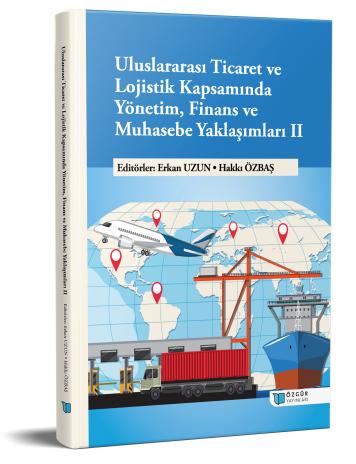
Kentsel Son Adım Lojistik Çözümleri İçin Yer Seçimi Problemi: Tarsus İlçesi Kargo Dolabı Örneği
Şu kitabın bölümü:
Uzun,
E.
&
Özbaş,
H.
(eds.)
2025.
Uluslararası Ticaret ve Lojistik Kapsamında Yönetim, Finans ve Muhasebe Yaklaşımları II.
Özet
Eğitim olanakları, ekonomik ve sosyal fırsatlara erişim gibi nedenlerle kırsal alanlardan kentsel merkezlere doğru gerçekleşen göç, kentsel lojistik faaliyetlerine olan ilgiyi artırmıştır. Kentsel alanlardaki trafik sıkışıklığı ve artan kentsel teslimatların yol açtığı olumsuz etkiler, hızlı ve başarılı teslimat ve müşteri memnuniyeti gibi hedeflerle çelişmektedir. Bu durum, yerel yönetimler ve hükümetler tarafından izlenen sürdürülebilirlik politikalarının uygulanmasında da çeşitli engeller yaratmaktadır. Kentsel alanlarda lojistik faaliyetlerden kaynaklanan olumsuz etkilerin, tedarik zincirlerinin son aşamasını temsil eden son kilometre teslimat faaliyetlerinde hayata geçirilen uygulamalarla giderilmesi hedeflenmektedir. Geleneksel eve teslimat hizmetlerine etkili bir alternatif olabilecek ev dışı teslimat yöntemleri arasında, son yıllarda kargo dolaplarının sayısı giderek artmaktadır. Bu çalışma, Türkiye'nin önemli şehirlerinden biri olan Mersin'in en kalabalık ilçesi Tarsus'ta kargo dolapları için potansiyel kurulum yerlerini seçmeyi amaçlamaktadır. Yer seçimi için çok kriterli karar verme çerçevesi, Bulanık Analitik Hiyerarşi Süreci (Bulanık AHP) ve Bulanık İdeal Çözüme Benzerliğe Göre Sıralama Tekniği (Bulanık TOPSIS) ile oluşturulmuştur. Oluşturulan modelde beş farklı alternatif konum ve yedi farklı değerlendirme kriterinden yararlanılmıştır. Sekiz farklı müşteriden elde edilen veriler kullanılarak, müşteri bakış açısıyla kargo dolapları için uygun kurulum konumları seçilmesi amaçlanmıştır. Çalışmanın bulgularına göre, Tarsus ilçesi için kargo dolabı konum seçimi problemine ilişkin değerlendirme kriterleri arasında en önemli kriter “Hırsızlık Riski”dir. Sonuçlar, en uygun konumun “Yarenlik Alanı” olduğunu göstermektedir.

